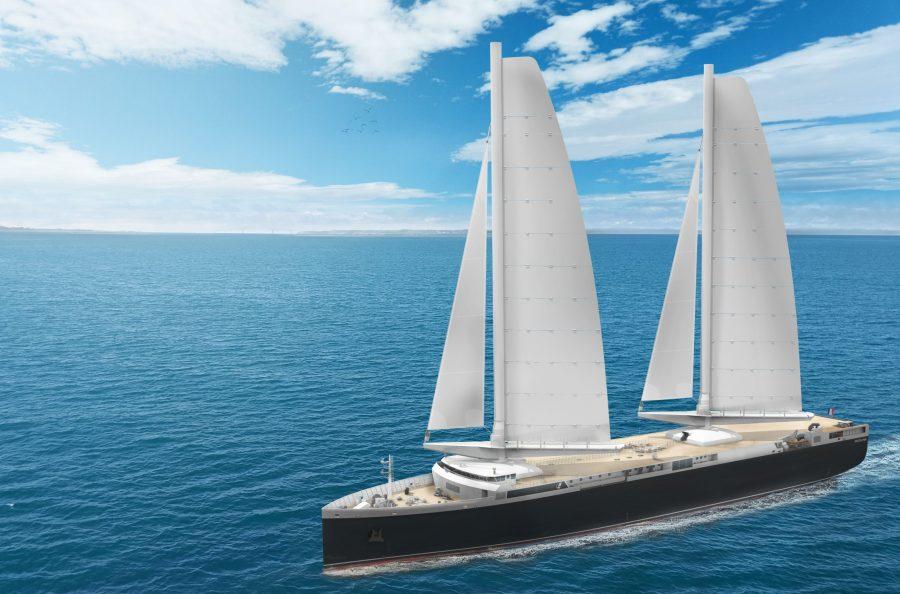After nearly a decade in development, the announcement in January that French shipowner Neoline Armateur has signed a contract with a Turkish shipyard, RMK Marine, for the construction of the world’s first large sail-powered commercial cargo ship has been heralded as a landmark moment in the renaissance of wind propulsion.
But while much of the focus surrounding the 136m ro-ro car carrier, due for delivery in 2025, has inevitably been drawn towards its SolidSail rigging system, expected to account for as much as 80% of its propulsion needs, beneath the waterline it will benefit from an equally innovative auxiliary propulsion system developed by Swedish specialists Berg.
“The Neoliner is a hybrid in the sense that you have sail as the primary propulsion but you also have a conventional propulsion system,” explains Jonas Nyberg, Berg Propulsion’s managing director for the western hemisphere. “Around 15 years ago we developed propellers that allow you to do full feathering, so when the weather conditions are favourable you can completely turn them off.
Under the agreement with RMK Marine, Berg will supply a MPP850F controllable pitch propeller for the Neoliner together with a shafting system, gearbox and control system, and 3xMTT113FP tunnel thrusters. However it’s the patented feathering system – whereby the propeller blades can be set parallel to the water flow to minimise drag – which makes it ideally suited to fully exploit the benefits of wind power. According to Nyberg while other propulsion solution providers offering feathering essentially limit the pitch of the propeller to offset it, they are unable to offer full reverse like Berg.
Complementing this will be Berg’s Dynamic Drive software, a propulsion optimisation solution integrated into its control system that’s said to work especially well with an auxiliary power source such as a sail.
“When wind is your primary power source, but you need a bit of propeller to make your speed, the running condition of that propeller becomes completely different because it’s nowhere near as heavy. The dynamic drive system will make sure you move the operational point to the right place. It’s something neglected with sailing vessels because sometimes you don’t consider the difference compared to a motor vessel,” says Nyberg.
Although the Neoliner is Berg’s most high-profile wind project to date, and a niche market the company is keen to capitalise upon as the appetite for wind grows, it’s by no means their first. Around 10 years ago it collaborated in equipping an old two-masted Icelandic schooner, Opal, with a propeller that could double as a turbine and charge a battery, thereby allowing the vessel to manoeuvre using electrical power when it came into port. “That was our first encounter with a propeller that has completely new sets of operating conditions – propeller, feathering and generator,” notes Nyberg.
Retrofit opportunities
Although newbuilding projects grab the headlines, retrofits form a substantial part of Berg’s business, implementation of CII is driving awareness among shipowners of the manifold possibilities for improving the efficiency of their vessels.
Berg’s dedicated Energy Efficiency department works exclusively with retrofitting; upgrading a ship’s propulsion system, changing propeller blades (even those of rival manufacturers) based on operational profile and introducing power electronics and frequency drives to the shaft alternators which facilitates power limitation. “When you put these together you get close to what a new vessel would have been,” comments Nyberg.
In certain instances the benefits of such a propulsive overhaul can be quite dramatic and perhaps instructive to those inclined to think the emphasis should be on improving engine efficiency. “With container feeder vessels the difference we can make is massive, we’re talking 20% range in fuel consumption reduction,” says Nyberg. “Vessels that are traditionally built for a very high speed then reduce that quite considerably you can make really massive efficiency improvements.
“In 2021, we did a project for [Dutch shipowner] Vroon for the 1,160TEU vessel Indian Express where we achieved documented saving of 21%, just by changing blades. It wasn’t even our propeller blades to start with but we have the technology, methodology and skills to change the blades on competitor products as well. It’s a new field, and one where it’s perhaps surprising that you can achieve such big changes.”




